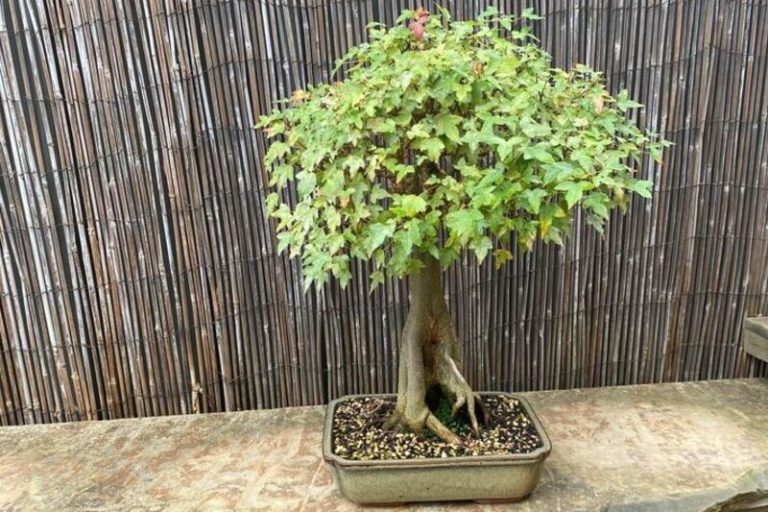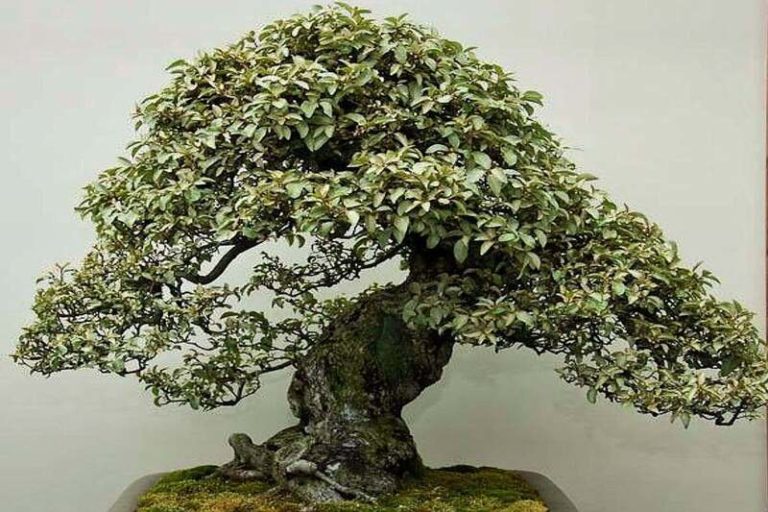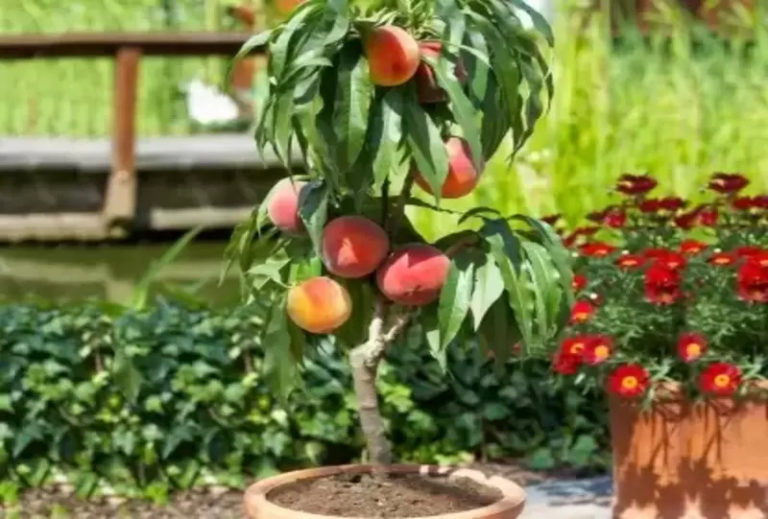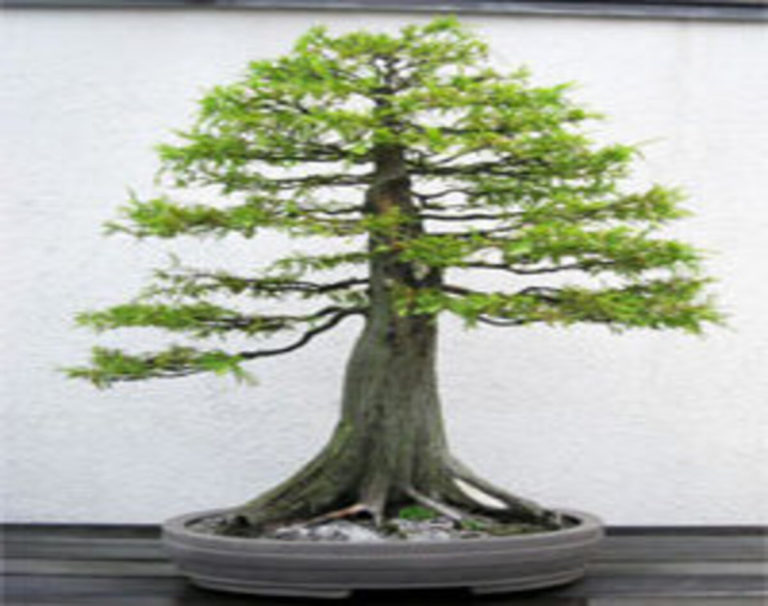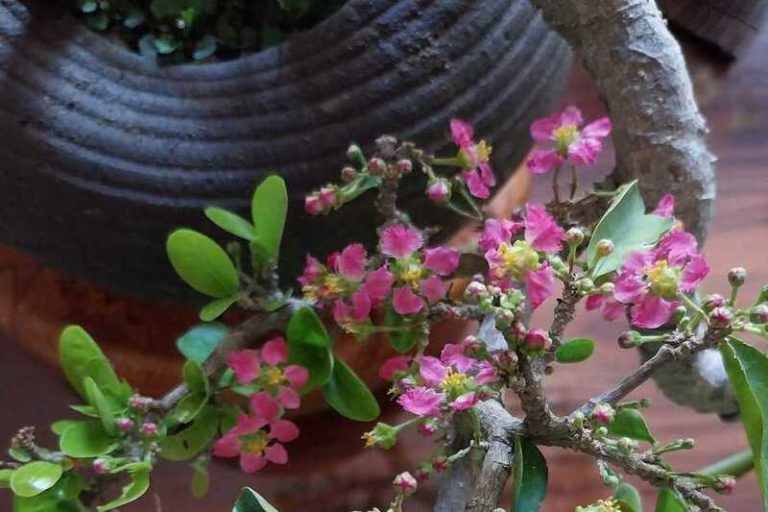Lilac Bonsai : A Stunning Addition to Your Bonsai Collection
Bonsai trees are small trees that are grown in containers and then sculpted to create a distinctive and attractive household decoration. The Lilac Bonsai is one of the most popular Bonsai tree varieties. In this article, we will learn more about the history, maintenance, and benefits of this magnificent tree.
What is Lilac Bonsai?
The Lilac Bonsai is a diminutive representation of a typical lilac tree. In the spring, fragrant blossoms emerge on this deciduous shrub. The Lilac Bonsai is a favorite among bonsai enthusiasts due to its woody stem and gorgeous canopy of foliage and blossoms.
History of Lilac Bonsai
The Lilac Bonsai has its origins in Japan, where Bonsai has been a popular art form for hundreds of years. The first Lilac Bonsai was made in the middle of the 1800s, and Bonsai fans all over the world liked it right away.
Today, Lilac Bonsai is grown all over the world, and it remains one of the most popular types of Bonsai trees. Bonsai lovers continue to experiment with different techniques and styles to create unique and beautiful Lilac Bonsai trees. The history of Lilac Bonsai shows how popular Bonsai has been for a long time and how beautiful and unique the Lilac Bonsai tree is.
Types of Lilac Bonsai
There are several types of Lilac Bonsai, each with its own unique features and characteristics. Here are some of the most popular types of Lilac Bonsai:
Japanese Lilac Bonsai: This is one of the most popular types of Lilac Bonsai. It has small, fragrant flowers that bloom in the late spring and early summer. The Japanese Lilac Bonsai has a smooth bark and a dense, compact growth habit.
Dwarf Korean Lilac Bonsai: This is another popular Lilac Bonsai variety. It blooms in late spring and early summer with little lavender-colored flowers. The Dwarf Korean Lilac Bonsai has rough bark and grows slowly and compactly.
Sensation Lilac Bonsai: The Sensation Lilac Bonsai is a unique hybrid cultivar with large, beautiful white flowers that have a purple edge. This type of bonsai has smooth bark and grows densely and straight up, which adds to its appeal and makes it a standout choice for any bonsai fan.
Persian Lilac Bonsai: This Lilac Bonsai has small, fragrant flowers that bloom in the early summer. The Persian Lilac Bonsai has a rough bark and a compact growth habit.
Chinese Lilac Bonsai: This kind of Lilac Bonsai isn’t very common. It blooms in late spring and early summer with small, fragrant flowers. The bark on the Chinese Lilac Bonsai is rough, and it grows slowly and straight up.
When choosing a Lilac Bonsai, think about the type of flowers, how it grows, and how rough or smooth the bark is to find one that fits your tastes and growing conditions the best. With the right care and attention, any kind of Lilac Bonsai can grow well and add beauty and calm to your home.
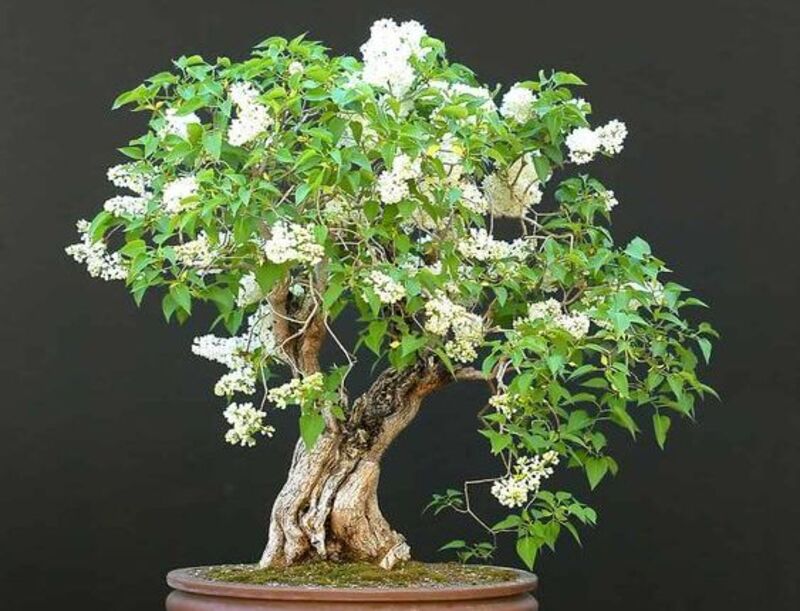
Lilac Bonsai and Its Symbolism
Lilac Bonsai has long been associated with symbolism, especially in Japanese culture where Bonsai cultivation originated. Here are some of the symbolic meanings of Lilac Bonsai:
- Beauty: Lilac Bonsai is known for its fragrant and colorful flowers, which are seen as signs of beauty and grace. The delicate and intricate branches and leaves of Lilac Bonsai are also thought to be beautiful and are often shown at Bonsai shows.
- Growth and renewal: Growing a Lilac Bonsai takes time and care, which is a metaphor for growing and changing as a person. The careful and slow way a Lilac Bonsai is grown is a reminder that personal growth and change take time and effort.
- Serenity: Caring for a Lilac Bonsai may be considered a contemplative technique that promotes relaxation and inner serenity. A Lilac Bonsai’s tranquil beauty may also serve as a reminder to slow down, take a deep breath, and enjoy the little things in life.
- Purity: Lilac Bonsai is a symbol of purity and innocence in certain cultures. Lilac Bonsai flowers’ white and purple hues are frequently connected with purity and the natural environment.
- Respect for nature: Bonsai cultivation, including Lilac Bonsai, emphasizes the significance of valuing and respecting nature. The meticulous and deliberate cultivation of a Lilac Bonsai is a reminder of our relationship with nature and the significance of preserving it for future generations.
Lilac Bonsai has a special symbolic significance for many individuals. This magnificent Bonsai tree embodies a number of symbolic meanings, including beauty, growth and renewal, tranquility, purity, and reverence for nature.
Characteristics of Lilac Bonsai
Lilac Bonsai, like all Bonsai trees, has a set of unique characteristics that make it distinct from other types of trees. Here are some of the main characteristics of Lilac Bonsai:
Size: The average height of a Lilac Bonsai is between 8 and 15 inches, although some varieties can reach a height of 24 inches. This tiny dimension makes it ideal for indoor cultivation and an excellent option for those with limited space.
Leaves: The leaves of Lilac Bonsai are small and oval-shaped, with a bright green color. The leaves are arranged in an alternating pattern along the branches and are often trimmed to maintain the tree’s shape.
Flowers: The Lilac Bonsai produces tiny, fragrant blossoms of various hues, including white, pink, and purple. The tree’s flowers are a renowned characteristic that blossom in the spring and summer.
Bark: The bark of Lilac Bonsai is typically smooth and gray, although some varieties may have rough or textured bark. The bark is an important part of the tree’s overall appearance and is often highlighted in Bonsai exhibitions.
Growth habit: Lilac Bonsai has a compact and dense growth habit, with branches that grow in a variety of directions. The tree is typically trained to grow in a specific shape or style, such as a formal upright or a cascade.
Care requirements: Lilac Bonsai requires regular care and attention to thrive, including proper watering, fertilization, and pruning. It also requires a specific soil mixture and exposure to adequate sunlight.
Lilac Bonsai is a distinctive and attractive tree with a variety of qualities that make it a popular option among Bonsai enthusiasts. Its small size, fragrant blossoms, and compact growth habit make it an ideal plant for domestic cultivation, and its low maintenance requirements make it a rewarding tree to cultivate and maintain.
How to Grow Lilac Bonsai
Raising a Lilac Bonsai may be a gratifying and joyful experience, but it takes time, commitment, and attention to detail. The following are the steps for growing a Lilac Bonsai:
- Choose a healthy plant: Get a healthy Lilac plant from a well-known nursery or garden shop. Look for a plant that has a strong root system, healthy leaves, and no evidence of illness or injury.
- Prune the roots: Pruning the Lilac plant’s roots with sharp pruning shears is a good idea. This will foster new growth and help the tree adjust to its new container.
- Plant the tree: The lilac should be planted in a container with adequate drainage and a soil mixture designed specifically for bonsai trees. Ensure that the roots are evenly distributed throughout the soil and that the tree is at the proper height.
- Water the tree: Water the Lilac regularly, making sure the soil remains moist but not waterlogged. Avoid letting the soil dry out completely or overwatering, which can cause root rot.
- Fertilize the tree: During the growing season, give the Lilac a balanced fertilizer every two weeks to help it grow and bloom well.
- Prune the tree: Prune the branches and leaves of the Lilac regularly to maintain its shape and promote new growth. Use sharp pruning shears to carefully trim back any overgrown branches or leaves.
- Train the tree: Train the Lilac to grow in a specific shape or style, such as a formal upright or a cascade. Use wire to gently bend and shape the branches, being careful not to damage the bark or leaves.
- Provide adequate light: Lilac bonsai needs enough sunlight to grow well. Put the tree somewhere sunny, like a south-facing window, and add artificial light if needed.
To grow a Lilac Bonsai, you have to be patient, work hard, and pay close attention to the details. By doing these things, you can grow and take care of a beautiful and healthy Lilac Bonsai tree.
Benefit of Lilac Bonsai
Lilac bonsai are good for the environment and the people who take care of them in many ways. Some of the best reasons to grow a Lilac Bonsai are:
Aesthetic appeal: Lilac Bonsai is an attractive tree that can enhance the visual allure of any indoor or outdoor space. Its aromatic blossoms and distinctive form make it a visually appealing addition to any room or garden.
Relaxation and stress relief: Taking care of a Lilac Bonsai can be a stress-relieving and relaxing activity. Numerous studies have demonstrated that horticulture can reduce tension and anxiety and enhance overall health.
Air purification: As with all plants, the Lilac Bonsai contributes to air purification by removing hazardous pollutants and contaminants. This can enhance the quality of ambient air and promote a healthier living environment.
Education: Growing a Lilac Bonsai can be an educational experience for both children and adults. It can teach valuable lessons about responsibility, patience, and the natural world.
Cultural significance: Bonsai lilacs have cultural significance in many regions of the globe, particularly Asia. As a symbol of peace, harmony, and attractiveness, it is frequently used in traditional ceremonies and celebrations.
Aesthetic appeal, relaxation and stress alleviation, air purification, education, and cultural importance are all advantages of growing a Lilac Bonsai. You may not only beautify your living environment by caring for a Lilac Bonsai, but you can also improve your entire well-being and connect with nature.
Styling and Design for Lilac Bonsai
Lilac Bonsai styling and design need careful study of its unique traits and development patterns. Here are some style and design recommendations for a beautiful and healthy Lilac Bonsai:
- Choose a style: Decide on the style of your Lilac Bonsai, such as formal upright, informal upright, or cascade. Each style has its own unique characteristics and requires specific techniques for training and shaping.
- Prune regularly: Prune the branches and leaves of the Lilac Bonsai regularly to maintain its shape and promote new growth. Use sharp pruning shears to carefully trim back any overgrown branches or leaves.
- Train the branches: Train the branches of the Lilac Bonsai to grow in the desired direction using wire or other shaping techniques. Be careful not to damage the bark or leaves when bending and shaping the branches.
- Use appropriate containers: Pick a container that suits your Lilac Bonsai’s design and size. Check that the container has appropriate drainage and is the correct size for the root system of the tree.
- Choose the right soil: Use soil that is made for Bonsai trees and has the right amount of nutrients and drainage.
- Provide adequate light: Lilac bonsai needs enough sunlight to grow well. Put the tree somewhere sunny, like a south-facing window, and add artificial light if needed.
- Use appropriate fertilizer: Use a balanced fertilizer to help plants grow and bloom in a healthy way. Follow the instructions from the manufacturer for how much to use and when.
When styling and planning a Lilac Bonsai, it’s important to think about the plant’s unique features and how it grows. By using these tips, you can make a Lilac Bonsai that is both beautiful and healthy. It will add to the look of any indoor or outdoor space.
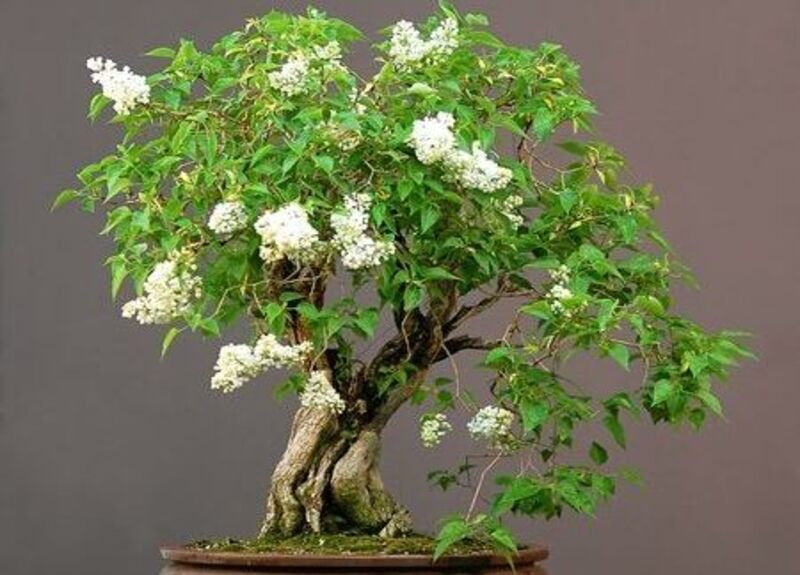
How to Care and Maintain Lilac Bonsai
To keep a Lilac Bonsai healthy and beautiful, you need to care for it regularly and use the right techniques. Here are some tips on how to take care of and keep a Lilac Bonsai healthy:
Watering: Lilac Bonsai should be watered often so that the soil stays moist but not soggy. Don’t water the tree too much or let the soil dry out completely. Instead, water it when the top layer of soil feels dry to the touch.
Soil: Use soil that drains well and is made just for Bonsai trees. Don’t use garden soil or potting soil because they can be too heavy and hold too much water.
Fertilizer: During the growing season, give the Lilac Bonsai a balanced fertilizer every two weeks to help it grow and bloom well. Follow the instructions from the manufacturer for how much to use and when.
Pruning: Trim the Lilac Bonsai’s branches and leaves often to keep its shape and encourage new growth. Use sharp pruning shears to cut back any branches or leaves that are getting too big.
Wiring: Use techniques like wiring to shape and train the Lilac Bonsai’s branches. When you bend and shape the branches, be careful not to hurt the bark or the leaves.
Sunlight: Lilac bonsai needs enough sunlight to grow well. Put the tree somewhere sunny, like a south-facing window, and add artificial light if needed.
Temperature: Lilac Bonsai prefers temperatures around 60 to 65 degrees Fahrenheit (15 to 18 degrees Celsius), but can tolerate greater temperatures in the summer. Avoid exposing the tree to direct sunlight and areas with extreme temperature fluctuations.
Repotting: Every two to three years, repot the Lilac Bonsai to renew the soil and promote healthy root development. Use a slightly larger container than the current one and fill it with new Bonsai soil.
Lilac Bonsai Care Sheet
| Aspect | Care Tips |
| Watering | Don’t overwater soil. Water when soil seems dry. Prevent overwatering or soil drying out. |
| Soil | Use well-draining soil for Bonsai trees. Avoid regular garden soil or potting soil. |
| Fertilizer | During growth season, apply balanced fertilizer every two weeks. Apply according per manufacturer’s directions. |
| Wiring | Use wiring techniques to shape and train branches. Be careful not to damage bark or leaves. |
| Pruning | For form and growth, prune branches and leaves frequently. Sharpen pruning shears. |
| Sunlight | Put in a bright spot like a south-facing window and add artificial light if needed. |
| Temperature | Prefers cooler temperatures around 60-65°F (15-18°C). Avoid extreme temperature fluctuations. |
| Repotting | To freshen soil and promote healthy root development, repot every 2-3 years. Use new Bonsai soil and a slightly larger pot. |
By following these tips, you can care for and maintain a healthy and beautiful Lilac Bonsai that will provide joy and beauty for many years to come.
Conclusion:
Lilac Bonsai is a gorgeous and distinctive addition to any Bonsai collection. Its rich history and profound symbolism make it an ideal gift for a loved one or a unique addition to your home or garden. With proper care and maintenance, bonsai lilacs can flourish and provide years of beauty and enjoyment.
Remember to provide sufficient sunlight, suitable soil and fertilizer, regular pruning and wiring, as well as meticulous watering and repotting. By following these instructions, you can create a beautiful and healthy Lilac Bonsai that will bring you years of happiness and peace.
FAQ:
Q: What is Lilac Bonsai?
A: Lilac Bonsai is a miniature version of the Lilac tree that is grown and trained in the Bonsai style.
Q: What is the symbolism of Lilac Bonsai?
A: Lilac Bonsai symbolizes love, purity, and innocence.
Q: How do I care for Lilac Bonsai?
A: To take care of a Lilac Bonsai, make sure it gets enough light, has the right soil and fertilizer, is pruned and wired regularly, and is carefully watered and repotted.
Q: Can I grow Lilac Bonsai indoors?
A: Yes, Lilac Bonsai can be grown indoors but requires adequate sunlight or artificial light.
Q: When should I prune Lilac Bonsai?
A: Lilac Bonsai needs to be pruned often to keep its shape and encourage new growth. The best time to prune is when the plants are growing, usually in the spring or summer.
Q: How often should I water Lilac Bonsai?
When the top layer of soil feels dry to the touch, water the Lilac Bonsai. Don’t water the soil too much or let it dry out completely.
Q: Can I wire Lilac Bonsai?
A: Yes, you can use wire to shape and train the branches of a Lilac Bonsai. When you bend and shape the branches, be careful not to hurt the bark or the leaves.
Q: When should I repot Lilac Bonsai?
A: Repot Lilac Bonsai every two to three years to refresh the soil and promote healthy root growth.
Q: What type of soil is best for Lilac Bonsai?
A: Use soil that drains well and is made for Bonsai trees. Don’t use regular garden soil or potting soil because they can be too heavy and hold too much water.
Q: How long does Lilac Bonsai live?
A: With proper care and maintenance, Lilac Bonsai can live for decades.
Also Read:



